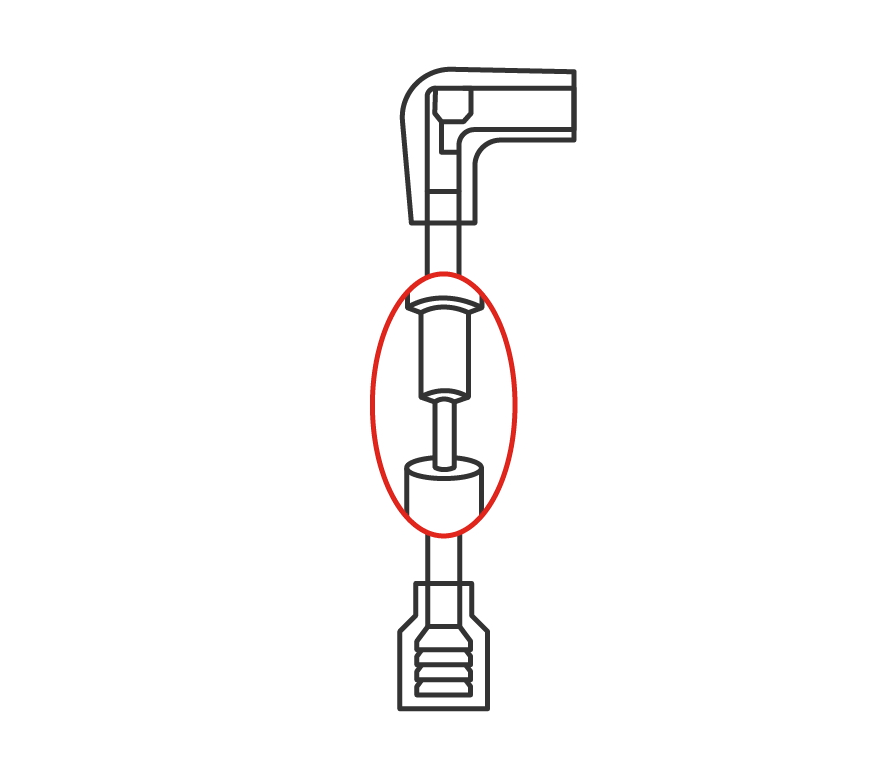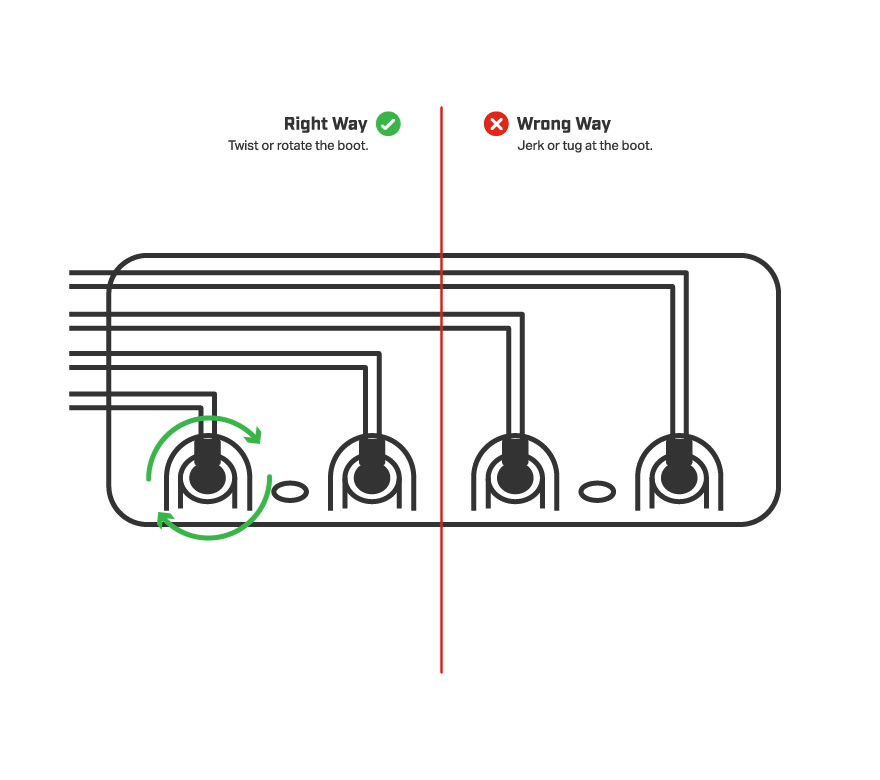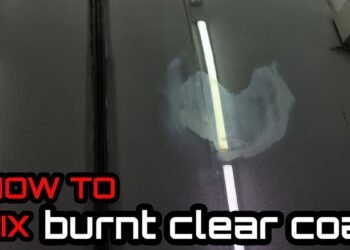Replacing spark plug wires keeps your engine running smoothly. It’s an essential maintenance task.
Many car owners overlook it, but replacing spark plug wires can improve engine performance. Old or damaged wires can cause misfires, poor fuel economy, and rough idling. This simple task can save you money on repairs and ensure your vehicle runs efficiently.
In this guide, we’ll explore why spark plug wires need replacement and provide a step-by-step process to do it yourself. Whether you’re a seasoned DIYer or a beginner, you’ll find this guide helpful. Let’s dive into the benefits and the how-to of replacing spark plug wires. Your car will thank you.

Credit: www.championautoparts.com
Gather Necessary Tools
Before you start replacing spark plug wires, gather all the necessary tools and materials. This makes the process smooth and efficient. Proper preparation ensures you have everything on hand and prevents unnecessary interruptions.
Required Tools And Materials
Here’s a list of the essential tools and materials:
- New spark plug wires
- Socket wrench set
- Torque wrench
- Dielectric grease
- Gapping tool
- Work gloves
Having these tools ensures a successful replacement of spark plug wires.
Safety Precautions
Safety is important. Always follow these precautions:
- Work in a well-ventilated area.
- Wear protective gloves.
- Ensure the engine is cool.
- Disconnect the battery.
Following these steps minimizes risks and keeps you safe during the process.

Credit: www.youtube.com
Locate Spark Plug Wires
Locating spark plug wires is the first step in replacing them. Spark plug wires are crucial for delivering electricity to the engine. This ensures your vehicle runs smoothly. Follow these steps to locate and identify the spark plug wires in your engine.
Identifying Spark Plug Wires
Spark plug wires connect the spark plugs to the ignition system. They are usually thick and insulated cables. You will find them attached to the top of the engine. Look for wires leading to the spark plug sockets. These sockets are often on the engine’s sides.
Check your vehicle manual for a detailed diagram. This will help you identify the correct wires. Make sure you have the right tools before proceeding.
Engine Layout
Every engine layout is different. Some engines have spark plugs at the top, others at the sides. Check your engine layout carefully. Inline engines usually have spark plugs in a row. V-shaped engines have spark plugs on both sides.
Identify the spark plug wires based on the engine type. It’s essential to know your engine layout. This will make the task easier and prevent mistakes. Pay attention to the number of spark plug wires. Make sure you replace them one by one to avoid confusion.
Remove Old Wires
Replacing spark plug wires is crucial for engine performance. Old wires can cause misfires and poor fuel economy. The first step is to remove the old wires carefully.
Disconnect Battery
Before starting, disconnect the car battery. This prevents electrical shocks. Use a wrench to loosen the battery terminal. Remove the negative cable first. This ensures safety during the process.
Carefully Detach Wires
Next, locate the spark plug wires. They connect the spark plugs to the ignition system. Gently pull the boot, not the wire itself. Twist the boot to break any seal. Slowly pull it off the spark plug. Repeat this for each wire. Label each wire if necessary to avoid confusion. Ensure you do not damage the wires while removing them.
Prepare New Wires
Before replacing spark plug wires, preparing new wires is crucial. This step ensures a seamless installation. It also guarantees optimal engine performance. Follow these simple steps to prepare your new spark plug wires properly.
Check Compatibility
First, ensure the new wires match your vehicle’s specifications. Check the manufacturer’s guidelines. Confirm the wire’s resistance and insulation. This step prevents potential issues and ensures a perfect fit.
Measure And Cut To Length
Next, measure the old wires. Use these measurements to cut the new wires. This ensures the new wires fit correctly. Proper length prevents damage and ensures good performance. Use a wire cutter to cut the new wires. Ensure the cut is clean and precise.
Install New Wires
Replacing spark plug wires is a crucial step in car maintenance. Fresh wires ensure better performance and fuel efficiency. Follow these steps to install new wires properly.
Attach To Spark Plugs
Begin by attaching the new wires to the spark plugs. Make sure each wire clicks into place. A secure fit ensures proper functioning. Check that the wires are not loose. A loose connection can cause misfires.
Connect To Distributor Cap
Next, connect the other end of the wires to the distributor cap. Match each wire to its correct terminal. This step is crucial for proper engine timing. Firmly press the wires onto the terminals. Double-check each connection to avoid issues.
Double-check Installation
After installing your new spark plug wires, it is vital to double-check the installation. This ensures everything is connected correctly and your engine runs smoothly. Missing a step can lead to performance issues or damage.
Ensure Secure Connections
Check each wire to ensure it is securely connected. A loose wire can cause misfires. Feel for a snug fit on both the spark plug and the distributor cap. A proper connection should feel tight and stay in place when gently tugged.
| Connection Point | Signs of Secure Fit |
|---|---|
| Spark Plug | Firm click sound when attached |
| Distributor Cap | Wire does not wiggle or come off easily |
Look For Crossed Wires
Crossed wires can cause engine performance issues. Ensure each wire is routed correctly. Follow the path from the distributor to the spark plug. Avoid overlapping wires and ensure they follow a direct path.
- Check the wiring diagram for your vehicle.
- Route wires according to the diagram.
- Keep wires separated to avoid interference.
Double-checking these steps can save you from future headaches. Your engine will thank you.
Test Engine Performance
Testing your engine’s performance after replacing spark plug wires is vital. It ensures everything is functioning correctly. This step will help identify any issues early. It also guarantees a smooth driving experience. Follow these steps to test your engine’s performance effectively.
Start The Engine
Begin by starting the engine. Listen closely as it turns over. A smooth start indicates the wires are correctly installed. Any hesitation or rough sounds could signal a problem. Pay attention to these initial signs.
Check For Smooth Operation
Once the engine is running, check for smooth operation. The engine should run steadily without misfires. Feel for any vibrations or irregularities. These can indicate an issue with the spark plug wires.
Observe the dashboard for any warning lights. These lights can alert you to potential problems. Ensure the engine runs smoothly at idle and various speeds. This comprehensive check ensures everything is in order.

Credit: www.championautoparts.com
Frequently Asked Questions
What Are Spark Plug Wires?
Spark plug wires are cables that transfer electricity from the ignition coil to the spark plugs.
How Often Should Spark Plug Wires Be Replaced?
Replace spark plug wires every 30,000 to 50,000 miles. Check your car’s manual for exact details.
What Are Signs Of Bad Spark Plug Wires?
Signs include engine misfires, poor acceleration, and rough idling. Also, decreased fuel efficiency.
Can Bad Spark Plug Wires Cause Engine Problems?
Yes, they can cause misfires, poor performance, and even damage other engine parts.
Is It Hard To Replace Spark Plug Wires?
No, it’s a simple job. Just follow the steps in your car’s manual.
Conclusion
Replacing spark plug wires is an easy way to maintain your car. It ensures better performance and fuel efficiency. Follow simple steps for a quick replacement. Check connections, handle with care, and test the engine. Regular maintenance can prevent bigger issues.
Save money and time with this DIY task. Keep your vehicle running smoothly by changing spark plug wires. Stay safe on the road with these simple tips. Happy driving!

















